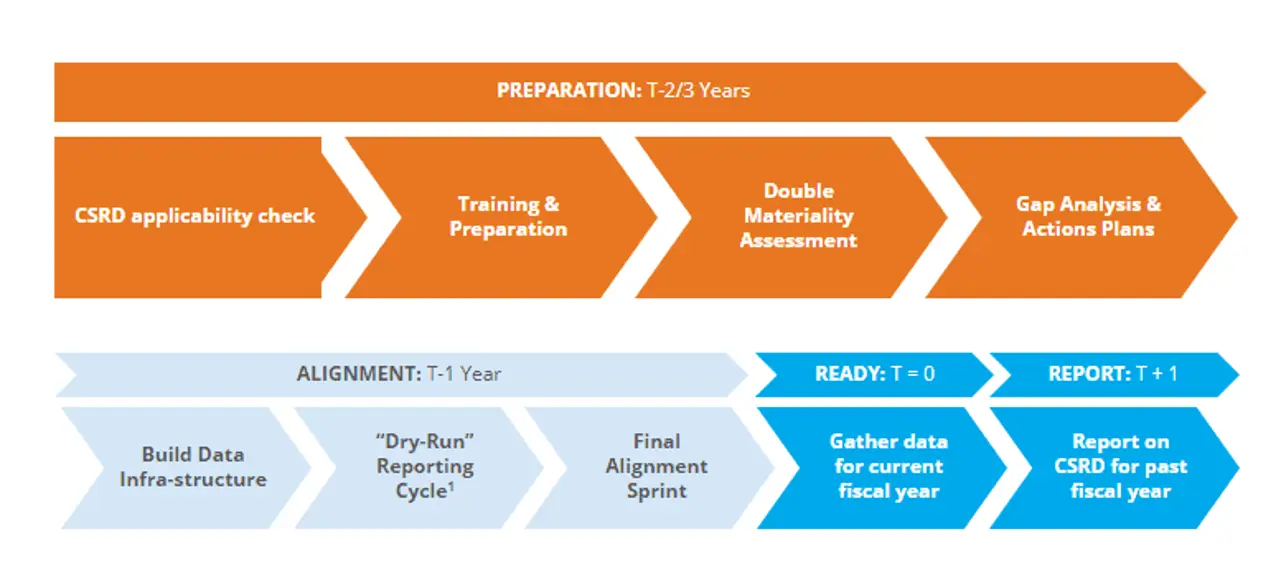For the first time, investors will be able to access public data pertaining to a company's key sustainability themes. This will help them to gain a comprehensive understanding of both a company’s ‘outgoing’ impact on the environment and society and on its ‘incoming’ sustainability-related risks and opportunities.
However, the directive will also present a significant reporting challenge to companies. It is vital that companies commence preparations well before the start of their responsibilities.
Is my company in scope?
The ‘scoping maze’ introduced by the CSRD does present hurdles, as it adds layers of complexity, especially for non-EU parent companies with large or EU-listed subsidiaries.
The CSRD impacts four distinct categories of companies, each with its unique timeline:
| EU large listed companies | Large non-listed EU companies | EU-listed (non-micro company) SMEs | Non-EU parents of one or more large or EU-listed subsidiaries |
| Compliance with two of the following criteria: | Compliance with two of the following criteria: | Compliance with two of the following criteria: | Turnover of €150m for two consecutive years. |
|
|
|
|
|
|
|
|
|
|
|
|
| Reporting in 2025 on FY2024 | Reporting in 2026 on FY2025 | Reporting in 2027 on FY2026 | Reporting in 2029 of FY2028 |
How can my company prepare and start aligning?
Navigating the CSRD preparation is a multifaceted, long-term endeavour. After confirming your company's applicability, it is crucial to commence preparations early. Our readiness blueprint consists of three stages:







